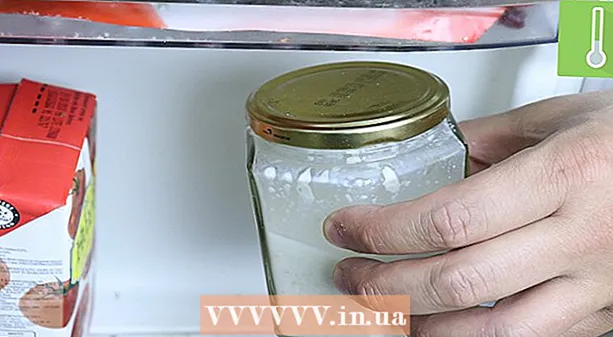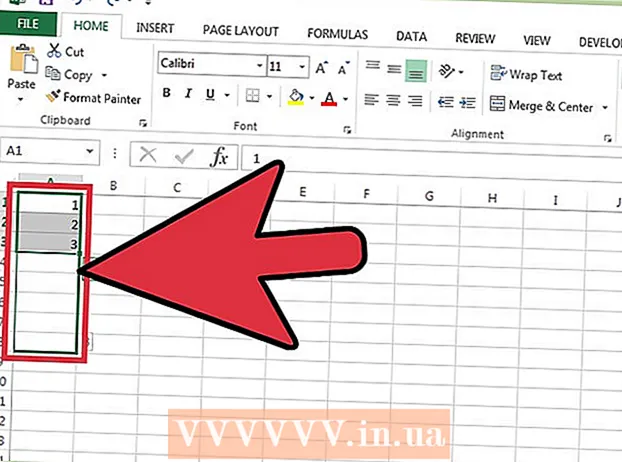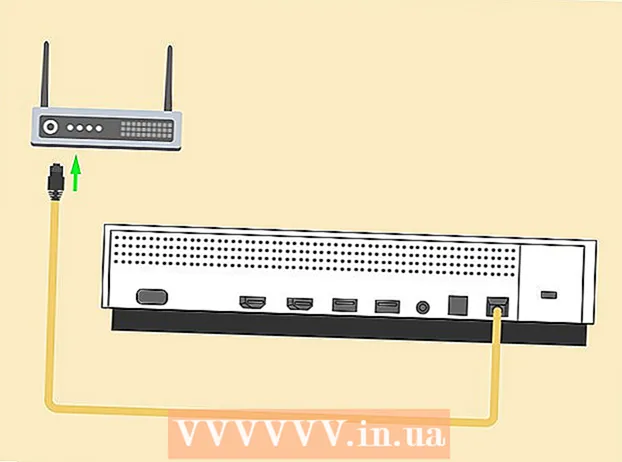
Content
- Steps
- Method 1 of 3: Examine the cows and then catch them
- Method 2 of 3: Preparing for Insemination
- Method 3 of 3: artificial insemination of cows
- Tips
- Warnings
- What do you need
Artificial insemination is the second most popular method of breeding livestock, in fact, it represents the only possible alternative to natural insemination between male and female animals. However, in dairy production, artificial insemination is much more common than in meat production. However, artificial insemination in the meat industry is gaining popularity due to the easy ability to produce great offspring from well-established breeding animals. Knowledge of the process of artificial insemination of cows is important for achieving high performance when breeding a herd in cases where special keeping for this purpose of the bull does not bring profit and in itself is not recommended.
In the following steps of the article, artificial insemination of cows will be described in detail. In order to fully understand the procedure for conducting artificial insemination and even get certified for the right to conduct artificial insemination of livestock, contact companies engaged in breeding animals and selling bull semen. Ask if they provide training in artificial insemination and if they issue certificates of completion of such training. This will be useful if you do not have a bull to help you with insemination yet.
Also consider bringing in an experienced professional to inseminate your cows. It is better to resort to the services of such a person than to independently learn how to carry out the procedure.
Steps
Method 1 of 3: Examine the cows and then catch them
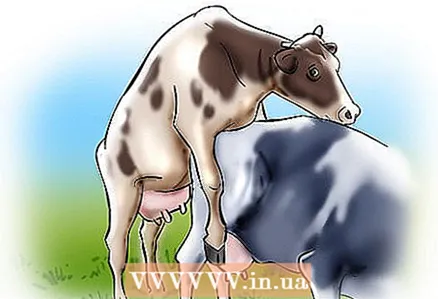 1 Examine cows for heat. Cows are in heat about every 21 days and last 24 hours.
1 Examine cows for heat. Cows are in heat about every 21 days and last 24 hours. - Read more on how to determine if a cow or heifer is in heat based on physiological, behavioral, and physical signs.
- In most cases, cows start to estrus at dusk or dawn.
- Read more on how to determine if a cow or heifer is in heat based on physiological, behavioral, and physical signs.
 2 Artificial insemination should be performed 12 hours after the onset of estrus. At this time, ovulation occurs, in which the egg leaves the fallopian tube and awaits fertilization with bull sperm.
2 Artificial insemination should be performed 12 hours after the onset of estrus. At this time, ovulation occurs, in which the egg leaves the fallopian tube and awaits fertilization with bull sperm.  3 Calmly handling the cow properly, direct the passage to the insemination pen (or simply the passage with the head gate at the end) and secure the cow's head in the gate. If there are others behind this cow, they should be left behind another gate so that they do not trample you trying to get ahead. If your insemination machine has a palpation cage, use it when performing artificial insemination. Some barns are designed so that each cow enters the insemination pen parallel to (side by side) with the other cows. This is very convenient when a specialist inseminator needs to inseminate more than 50 cows per day.
3 Calmly handling the cow properly, direct the passage to the insemination pen (or simply the passage with the head gate at the end) and secure the cow's head in the gate. If there are others behind this cow, they should be left behind another gate so that they do not trample you trying to get ahead. If your insemination machine has a palpation cage, use it when performing artificial insemination. Some barns are designed so that each cow enters the insemination pen parallel to (side by side) with the other cows. This is very convenient when a specialist inseminator needs to inseminate more than 50 cows per day. - When artificial insemination is carried out outdoors, it is best to do it on a warm sunny day rather than rainy windy weather. It is much better to use an indoor insemination machine.
Method 2 of 3: Preparing for Insemination
 1 Prepare water with a temperature of 34-35 degrees in a thermos. Use a thermometer to accurately measure the temperature.
1 Prepare water with a temperature of 34-35 degrees in a thermos. Use a thermometer to accurately measure the temperature.  2 Determine which flask contains the sperm you need. A file with the location of the semen of each bull in the storage tank avoids unnecessary searches.
2 Determine which flask contains the sperm you need. A file with the location of the semen of each bull in the storage tank avoids unnecessary searches.  3 Remove the flask from storage by moving it to the center of the nitrogen storage tank. Raise the flask just enough to take the semen tube. The top of the flask should not rise above the freeze line or 5-7.5 cm from the top of the tank.
3 Remove the flask from storage by moving it to the center of the nitrogen storage tank. Raise the flask just enough to take the semen tube. The top of the flask should not rise above the freeze line or 5-7.5 cm from the top of the tank.  4 Take the flask you want and then immediately lower it to the bottom of the tank. Keep the flask as low as possible in the reservoir while pulling the sperm tube out with tweezers.
4 Take the flask you want and then immediately lower it to the bottom of the tank. Keep the flask as low as possible in the reservoir while pulling the sperm tube out with tweezers. - You only have 10 seconds to remove the sperm tubes !!!
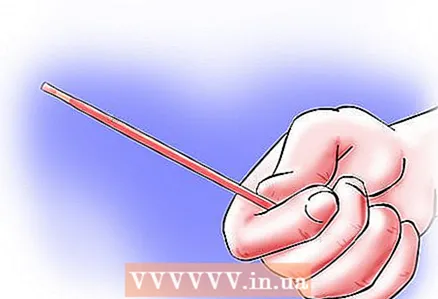 5 Shake the straw to remove the remaining liquid nitrogen (nitrogen easily turns into a gaseous state on contact with air and heat).
5 Shake the straw to remove the remaining liquid nitrogen (nitrogen easily turns into a gaseous state on contact with air and heat).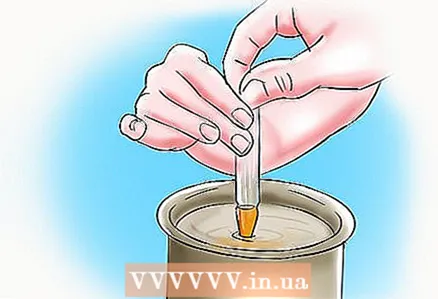 6 Immediately place it in a prepared thermos with warm water and hold it for 40-45 seconds.
6 Immediately place it in a prepared thermos with warm water and hold it for 40-45 seconds.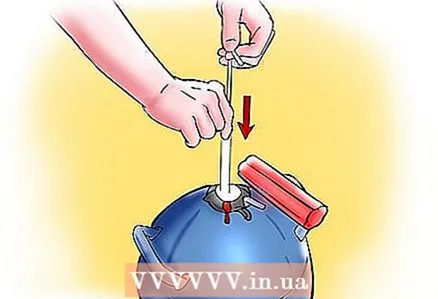 7 After placing the straw in warm water, return the flask back to the storage tank.
7 After placing the straw in warm water, return the flask back to the storage tank.- If more than 10 seconds have passed, and you did not have time to lower the flask to the storage location, then it must first be lowered again into the storage liquid nitrogen for complete cooling. Never do not return the sperm tube to storage if you removed it from the flask.
 8 Your device should be ready in an assembled state (you should prepare it before or after preparing a thermos with warm water). If the ambient temperature is cold, warm the tip of the appliance with your work clothes close to your body. Rubbing the tip of the appliance with a paper towel also helps to keep it warm. If the air temperature is high, then keep the device in a cool place. The insemination device should be neither too cold nor too hot to touch.
8 Your device should be ready in an assembled state (you should prepare it before or after preparing a thermos with warm water). If the ambient temperature is cold, warm the tip of the appliance with your work clothes close to your body. Rubbing the tip of the appliance with a paper towel also helps to keep it warm. If the air temperature is high, then keep the device in a cool place. The insemination device should be neither too cold nor too hot to touch.  9 Remove the straw from the thermos and pat dry with a paper towel. It must be completely dry before use. Gently shake your wrist while holding the straw in your hand to adjust the air bubble in the straw. The air bubble should rise to the end of the straw that you are holding in your hand.
9 Remove the straw from the thermos and pat dry with a paper towel. It must be completely dry before use. Gently shake your wrist while holding the straw in your hand to adjust the air bubble in the straw. The air bubble should rise to the end of the straw that you are holding in your hand. 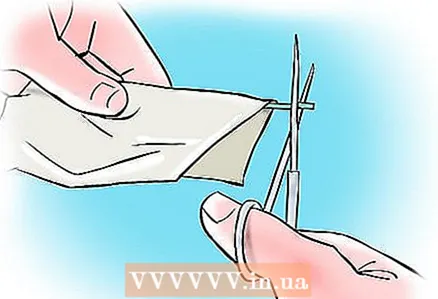 10 Insert the straw into the insemination device. Cut 1 cm from the top of the straw. Take a sharp pair of scissors or a specially designed knife and cut off the section of the straw with the air bubble.
10 Insert the straw into the insemination device. Cut 1 cm from the top of the straw. Take a sharp pair of scissors or a specially designed knife and cut off the section of the straw with the air bubble.  11 Wrap the insemination device in a clean paper towel or protective case and place it in your clothing close to your body to transport it to the cow and maintain a constant temperature.
11 Wrap the insemination device in a clean paper towel or protective case and place it in your clothing close to your body to transport it to the cow and maintain a constant temperature.
Method 3 of 3: artificial insemination of cows
 1 Lift the cow's tail up so that it is on your left forearm, or tie it up so that it cannot interfere with the insemination process. Raise the tail with one hand (preferably with your right), and with the other (which should be gloved and lubricated), clear the path for the insemination device from feces in the rectum, which can interfere with the feeling of the genitals and insertion of the device into the vagina.
1 Lift the cow's tail up so that it is on your left forearm, or tie it up so that it cannot interfere with the insemination process. Raise the tail with one hand (preferably with your right), and with the other (which should be gloved and lubricated), clear the path for the insemination device from feces in the rectum, which can interfere with the feeling of the genitals and insertion of the device into the vagina.  2 Clean your vulva with a clean paper towel or rag to remove muck and dirt.
2 Clean your vulva with a clean paper towel or rag to remove muck and dirt. 3 Remove the appliance from your clothing, unfold it, and then insert it at a 30-degree angle to the cow's vulva. This is done in order not to accidentally get the device down into the bladder.
3 Remove the appliance from your clothing, unfold it, and then insert it at a 30-degree angle to the cow's vulva. This is done in order not to accidentally get the device down into the bladder.  4 Keeping your left hand in the cow's rectum (where it should be from the beginning), feel with your fingertips through the walls of the intestine and vagina for the location of the tip of the insemination device until it reaches the cervix.
4 Keeping your left hand in the cow's rectum (where it should be from the beginning), feel with your fingertips through the walls of the intestine and vagina for the location of the tip of the insemination device until it reaches the cervix.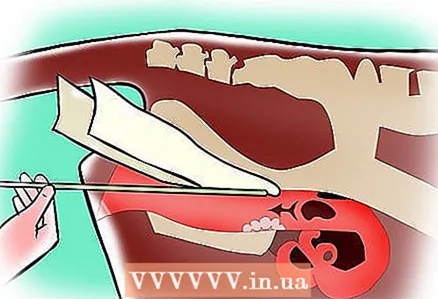 5 Grasp the cervix with your hand in the cow's rectum (as if grabbing the handrail close to your hand) and hold the cervix securely while inserting the tip of the insemination device into it.
5 Grasp the cervix with your hand in the cow's rectum (as if grabbing the handrail close to your hand) and hold the cervix securely while inserting the tip of the insemination device into it. 6 When the device is inserted into the cervix, check its position with your index finger. The end should enter the uterus only 0.5-1 cm.
6 When the device is inserted into the cervix, check its position with your index finger. The end should enter the uterus only 0.5-1 cm.  7 Slowly push the plunger with your right hand, releasing half the semen dose.
7 Slowly push the plunger with your right hand, releasing half the semen dose. 8 Recheck the semen entry site, making sure it goes to the uterus and not to one of the dead ends (see. tips), and release the remaining half of the semen dose from the straw.
8 Recheck the semen entry site, making sure it goes to the uterus and not to one of the dead ends (see. tips), and release the remaining half of the semen dose from the straw.  9 Slowly remove the insemination device and your hand from the cow. Check the cow for bleeding, infection, or sperm return by examining the unit.
9 Slowly remove the insemination device and your hand from the cow. Check the cow for bleeding, infection, or sperm return by examining the unit.  10 Check the straw to make sure the correct bull semen has been used for the cow.
10 Check the straw to make sure the correct bull semen has been used for the cow.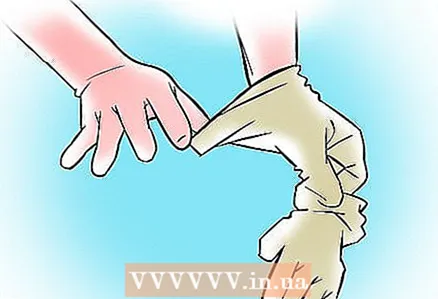 11 Throw away the straw, glove, and towels.
11 Throw away the straw, glove, and towels. 12 Clean the insemination unit if necessary.
12 Clean the insemination unit if necessary. 13 Record breeding information in your file.
13 Record breeding information in your file.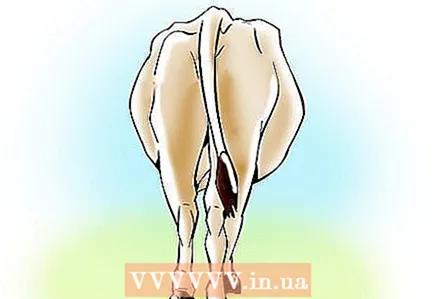 14 Release the cow (if required, depending on how your insemination workstation is set up) and secure the next cow for insemination.
14 Release the cow (if required, depending on how your insemination workstation is set up) and secure the next cow for insemination. 15 Check the temperature of the water in the thermos before repeating the above steps for another cow.
15 Check the temperature of the water in the thermos before repeating the above steps for another cow. 16 Repeat the insemination procedure for the next cow.
16 Repeat the insemination procedure for the next cow.
Tips
- Insemination equipment should not come into contact with the lubricant, as most lubricants are spermicidal.
- Always hold the end of the catheter of the insemination device upward at a 30 degree angle (not downward) to avoid entering the bladder.
- Always keep insemination equipment clean, warm and dry.
- Liquid nitrogen is the best solution for semen cooling and long-term storage.
- Take only one semen straw at a time. You will only be serving one cow at a time, so it is best to individually thaw each semen dose.
- Use your fingers to move and place the insemination device in the cow's vagina. Avoid the two dead-end zones as you approach the uterus.
- There is a round blind pocket, which at the front end of the vagina connects to the cervix and is 1.5-2.5 cm deep. This pocket surrounds the entire domed cervix.
- The cervix itself is not straight. It contains protrusions that bend the cervical canal. This can also create dead-end pockets, which will be a problem for newcomers learning artificial insemination.
- Never insert the tip of the insemination device too deep through the cervix, otherwise you may infect or puncture the wall of the uterus.
- Breeding cattle takes time. There is nothing worse than haste. Haste leads to many more mistakes than quietly slow execution of tasks.
- Insert your hand into the cow in the same way as when testing cows and heifers for pregnancy.
Warnings
- Artificial insemination is much more difficult than it might seem. When using a pipette (or insemination device), many errors can be made in its position in the cow's uterus, since the pipette is easily displaced and it is impossible to check its position.
- Inexperienced insemination specialists often have low insemination success rates.
- Beware of the blind spots mentioned in the tips above.
What do you need
- Sperm storage tank for artificial insemination with flasks and straws
- A liquid nitrogen
- Straws with the right sperm
- Artificial insemination device
- Paper towels
- Straw cutter
- Thermos (preferably with a wide mouth)
- Grease
- Insemination gloves
- Tweezers
- Thick gloves
